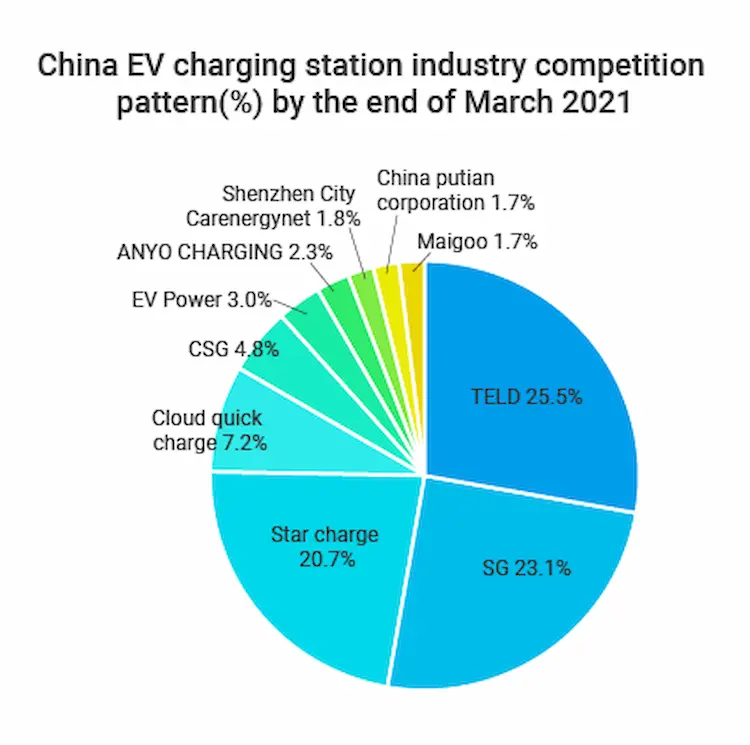China's EV Industry: A Global Powerhouse – America's Response

Table of Contents
China's EV Market: A Colossus in the Making
China's EV market is experiencing explosive growth, fueled by massive government subsidies and supportive policies. This has led to a dominant market share in both domestic sales and global exports, solidifying China's position as a leading player in the global EV market. Let's delve into the key factors driving this success:
-
Massive Government Subsidies and Supportive Policies: The Chinese government has implemented generous subsidies and tax breaks for EV purchases, significantly reducing the upfront cost for consumers and stimulating demand. These policies, combined with stringent emission regulations, have created a favorable environment for EV adoption.
-
Dominant Market Share: China boasts the largest EV market globally, with a significant portion of global EV sales originating from within its borders. Chinese EV manufacturers are increasingly exporting their vehicles internationally, further expanding their market reach and challenging established automakers.
-
Diverse Range of Chinese EV Manufacturers: The Chinese EV industry is characterized by a vibrant ecosystem of manufacturers, ranging from established automotive giants like BYD, to innovative startups like NIO and XPeng. This diverse landscape fosters competition and innovation.
-
Significant Investment in Charging Infrastructure: Addressing range anxiety, a major barrier to EV adoption, China has invested heavily in building a comprehensive charging infrastructure nationwide. This extensive network of charging stations is crucial for supporting the growth of the EV market.
-
Focus on Cost-Effective Battery Technology and Supply Chains: China has prioritized the development of cost-effective battery technology and securing its supply chains for critical battery materials. This focus on efficiency and vertical integration gives Chinese EV manufacturers a competitive edge.
Analyzing China's EV Success Factors
China's success in the EV sector is not accidental; it's the result of a strategic, multi-pronged approach:
-
Early Adoption of EV Technology and Significant Government Investment: China recognized the potential of EVs early on and invested heavily in research, development, and infrastructure. This early commitment has paid significant dividends.
-
Strong Domestic Supply Chain for Battery Materials and Components: China possesses a robust domestic supply chain for battery materials like lithium, cobalt, and nickel, giving it a strategic advantage in EV manufacturing. This reduces reliance on foreign suppliers and ensures cost-effectiveness.
-
Focus on Research and Development, Leading to Advancements in Battery Technology: Significant investment in R&D has propelled advancements in battery technology, leading to improved range, faster charging times, and lower costs.
-
Strategic Partnerships and Acquisitions to Accelerate Technological Innovation: Chinese companies have actively pursued strategic partnerships and acquisitions to gain access to advanced technologies and expertise, accelerating their innovation.
-
Government-led Initiatives Promoting the Adoption of Electric Vehicles: Government initiatives, including tax incentives, subsidies, and regulations promoting EV adoption, have played a crucial role in driving market growth.
The Rise of Chinese EV Manufacturers: A Global Threat?
The rapid expansion of Chinese EV manufacturers like BYD, NIO, and XPeng into international markets presents a significant challenge to established American and European carmakers. Their competitive pricing, often incorporating advanced technology and innovative features, is attracting consumers worldwide, disrupting the traditional automotive landscape and significantly impacting the global EV competition.
America's Response: Catching Up in the EV Race
The United States needs to take decisive action to remain competitive in the global EV market. This requires a multi-faceted approach:
-
Increased Investment in Domestic EV Manufacturing and Battery Production: The US needs to significantly boost investment in domestic EV manufacturing facilities and battery production to reduce reliance on foreign suppliers and create high-paying jobs.
-
Expansion of Charging Infrastructure Across the United States: A nationwide network of charging stations is essential to address range anxiety and encourage wider EV adoption.
-
Incentive Programs and Tax Credits to Boost EV Adoption: Attractive incentives and tax credits can make EVs more affordable for consumers, stimulating demand and driving market growth.
-
Focus on Developing Advanced Battery Technologies and Securing the Supply Chain: The US must prioritize research and development of advanced battery technologies, ensuring a secure and reliable supply chain for critical battery materials.
-
Strengthening Partnerships Within the Automotive and Technology Sectors: Collaboration between automotive manufacturers and technology companies is vital for accelerating innovation and developing advanced EV technologies.
Policy and Infrastructure: Crucial for American Competitiveness
Robust policies and substantial investment in infrastructure are paramount for the American EV industry to compete effectively with China. Comprehensive legislation supporting EV adoption, alongside targeted investments in charging infrastructure and battery production, are crucial for ensuring US competitiveness in the global EV market. This includes focusing on US EV infrastructure development, EV legislation, American EV investment, and government support for EVs in the USA.
Conclusion
China's EV industry has become a global powerhouse, presenting both a formidable challenge and a significant opportunity for the United States. To maintain competitiveness, America must accelerate its investment in domestic manufacturing, strengthen its supply chains, bolster its charging infrastructure, and implement supportive policies to incentivize EV adoption. Ignoring China's progress in the electric vehicle market is not an option; proactive and strategic responses are crucial. The future of the global automotive industry will be significantly shaped by the ongoing competition between China's and America's EV sectors. Learn more about the intricacies of the China EV industry and its impact on the global market – stay informed about this dynamic sector.

Featured Posts
-
 Lizzos Transformation Before And After Photos From The Oscars
May 05, 2025
Lizzos Transformation Before And After Photos From The Oscars
May 05, 2025 -
 Lizzos La Concert Showcasing Her Figure
May 05, 2025
Lizzos La Concert Showcasing Her Figure
May 05, 2025 -
 Severe Weather Threat In Nyc Monday Timing Impacts And Preparations
May 05, 2025
Severe Weather Threat In Nyc Monday Timing Impacts And Preparations
May 05, 2025 -
 Ftc Probes Open Ais Chat Gpt Implications For Ai Development
May 05, 2025
Ftc Probes Open Ais Chat Gpt Implications For Ai Development
May 05, 2025 -
 2025 Kentucky Derby Festival Queen Hailing From Georgetown
May 05, 2025
2025 Kentucky Derby Festival Queen Hailing From Georgetown
May 05, 2025
Latest Posts
-
 Ufc 314 Main Card And Prelims Complete Fight Order Announced
May 05, 2025
Ufc 314 Main Card And Prelims Complete Fight Order Announced
May 05, 2025 -
 Temperature Plummets In West Bengal Latest Weather Update
May 05, 2025
Temperature Plummets In West Bengal Latest Weather Update
May 05, 2025 -
 Ufc 314 Full Bout Order Announced For Main Card And Prelims
May 05, 2025
Ufc 314 Full Bout Order Announced For Main Card And Prelims
May 05, 2025 -
 North Bengal To Expect Rain A Detailed Wb Weather Report
May 05, 2025
North Bengal To Expect Rain A Detailed Wb Weather Report
May 05, 2025 -
 West Bengal Braces For Cold Snap Temperature Plunge Forecast
May 05, 2025
West Bengal Braces For Cold Snap Temperature Plunge Forecast
May 05, 2025
